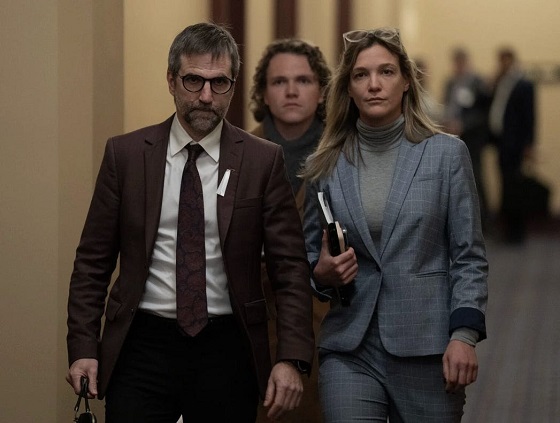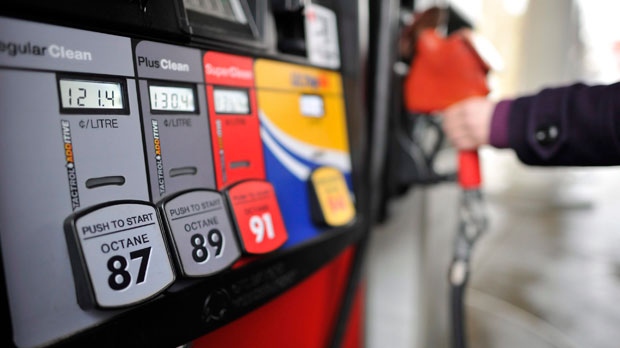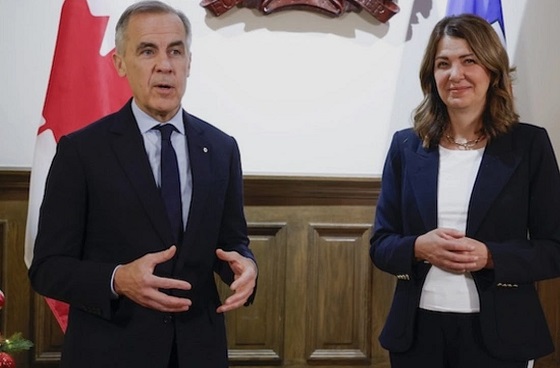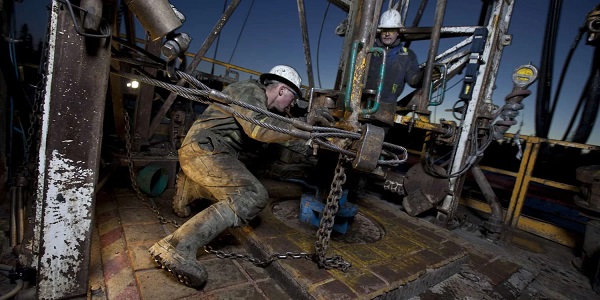Bruce Dowbiggin
The Housing Debacle: How Trudeau Turned Off Millenials
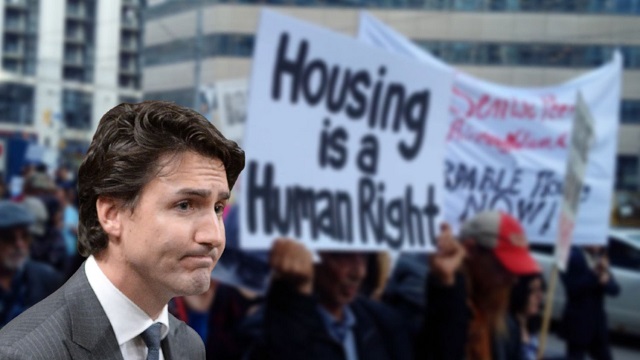
The numbers are out, and it’s unanimous. If you’re a young couple with kids, still want to buy a detached home in a location that has steady, well-paying jobs then Alberta remains the last refuge for Canada’s stressed-out middle class Millennials (those not in tent cities calling for the eradication of Israel).
But the widow is closing rapidly. Others have noticed. In 2023-2024 over 200,000 others took heed and made the province their new home. (No word if they were told about snow on Victoria Day by their realtor.) No surprise that most of them are flooding in from Ontario and B.C. where $750 K buys you an unheated shed behind your parents’ home.
According to Zoocasa $750 K. is the average price for a home in booming Calgary. Not a giveaway, but compared to Canadian Real Estate Association’s April benchmark price for a single-family home in the Greater Vancouver Area ($2.8 million) or the Greater Toronto Area ($1.3 million) it’s a positive steal. Edmonton’s average price clicks in at $493 K (you’d have to put up with Oilers fans) while $417,500 gets you a roof in Red Deer, located between the two metropoli.

As we say, get ‘em while they’re hot. Between numbered holding companies and offshore mystery shoppers, the Alberta market is poised for further generous bumps— particularly if the prime minister’s hopes of quashing Alberta’s energy industry don’t reach fruition before his demise in the next federal election.
Investors are on the prowl. Take Grand Prairie. Please. Rim shot. The city in the province’s northwest (average single-family home price of $379,262) is heating up as an investment. Says Zoocasa. “Despite its lower price, the city saw a 10% year-over-year price increase, highlighting its potential as a good investment opportunity.”
You get the picture. Grand Prairie. Medicine Hat. Lethbridge. Cochrane. For bargain investors you can buy a view in the Maritimes or a percolating economy in Saskatoon. But you can’t combine the two as well as Alberta does.
This runaway housing spiral is a bonus for current owners and a burden for young people. But it’s the worst for the Liberal federal government that likes to throw money at problems but never makes it stick— particularly in the housing market. (Justin Trudeau and his urban planners are now reaping the results of their brainwave to prioritize shoebox condo construction over single-housing units). The most recent boondoggle has finance minister Chrystia Freeland shovelling bucks to provinces for new housing— particularly in the green-conscious or lower-income demos.
The focus-group-approved Housing Accelerator Fund, a $4B initiative, will be topped up with an additional $400 million “to encourage municipalities to incentivize building by making transformative changes, such as removing prohibitive zoning barriers”. Also no natural gas stoves or three-car garages.
It all sounds wonderful at the photo ops but like Trudeau’s unfulfilled promise to plant two billion new trees, the idea of this government building 1.2 million new homes is risible. If they can get past zoning hurdles, financing restrictions and finding enough trades people it means building a preposterous home an hour for the foreseeable future.

Then there is the bind created by the jump in interest rates after Trudeau promised they’d stay low forever. Mortgage payment as a percentage of income for the median home price fell to 58.9 per cent in the first quarter of 2024. But that came after the bank’s affordability monitor stood at its worst levels since the 1980s to the end of 2023. Loose credit from Trudeau’s Bank of Canada supports this unreasonable cost level.
(That also doesn’t address Canadian rental properties. Between 2011 and 2016, the market lost 322,600 private rental units with monthly rents below $750. Investors are content to sit on empty properties, gentrify them into “condos” and flip them when the market improves.)
Numbers, numbers, numbers. It’s true. But the housing bind is a unique political problem for the Liberals, too— and will be for the Conservatives when they make it into office. Earlier generations of Boomers and Gen Xers have had their housing crises. Boomers were hit by the collapse of Ontario’s real estate market combined with 18 percent interest rates from the late 1980s to mid 1990s.
Gen X was sideswiped by the 2008 Investment collapse that wiped out savings. The reaction they received from their elders, who’d experienced the 1930s Depression and WW II, was ”suck it up, buttercup”. Take that whine and shove it.
However coddled these cohorts had been, they’d also experienced tough love from authority figures. While it wasn’t “bare feet and barrel staves” there was always a check on expectations. When Paul Martin and Ralph Klein, among others, put on the hair shirt in the mid 1990s to cure the excesses of Pierre Trudeau’s spending it was a sobering period of self-examination for Boomers and Gen Xers alike.

But Millenials are the generation of the 17th-place ribbon for meritorious attendance. Indulged and rewarded beyond their accomplishments they have come to personify DEI entitlement. No one is cut from the team. Everyone gets favour. Tick the boxes, and the world shall be yours.
The tent cities are the worst manifestations of this cohort. But, their feet having rarely touched ground, the expectations the rest of the Millenials place on government to award them homes and great jobs is not leavened by history’s example. They are clearly not amused by Happy Ways unless they get a guaranteed payout for being so perfect. Abacus polling shows the Conservatives at 32 percent among 18-29 year olds, surpassing Trudeau’s formerly strongest base, now at 28 percent. If those numbers don’t scare the Liberals, nothing will.
Trudeau has lived in government housing the past decade, so this is all news to him and his trust fund. But the headline on Election Night just might be Revenge of the Millenials. Not that it will take us back to the days of affordable housing.
Bruce Dowbiggin @dowbboy is the publisher of Not The Public Broadcaster A two-time winner of the Gemini Award as Canada’s top television sports broadcaster, he’s a regular contributor to Sirius XM Canada Talks Ch. 167. Now for pre-order, new from the team of Evan & Bruce Dowbiggin— Deal With It: The Trades That Stunned The NHL & Changed Hockey. From Espo to Boston in 1967 to Gretz in L.A. in 1988 to Patrick Roy leaving Montreal in 1995, the stories behind the story. Launching in paperback and Kindle on #Amazon this week. Destined to be a hockey best seller. https://www.amazon.ca/Deal-Trades-Stunned-Changed-Hockey-ebook/dp/B0D236NB35/
Bruce Dowbiggin
Integration Or Indignation: Whose Strategy Worked Best Against Trump?

““He knows nothing; and he thinks he knows everything. That points clearly to a political career.” George Bernard Shaw
In the days immediately following Donald Trump’s rude intervention into the 2025 Canadian federal election— suggesting Canada might best choose American statehood— two schools of thought emerged.
The first and most impactful school in the short term was the fainting-goat response of Canadian’s elites. Sensing an opening in which to erode Pierre Poilievre’s massive lead in the 2024 polls over Justin Trudeau, the Laurentian elite concocted Elbows Up, a self-pity response long on hurt feelings and short on addressing the issues Trump had cited in his trashing of the Canadian nation state.
In short order they fired Trudeau into oblivion, imported career banker Mark Carney as their new leader in a sham convention and convinced Canada’s Boomers that Trump had the tanks ready to go into Saskatchewan at a moment’s notice. The Elbows Up meme— citing Gordie Howe— clinched the group pout.

(In fact, Trump has said that America is the world’s greatest market, and if those who’ve used it for free in the past [Canada] want to keep special access they need to pay tariffs to the U.S. or drop protectionist charges on dairy and more against the U.S.)
The ruse worked out better than they could have ever imagined with Trump even saying he preferred to negotiate with Carney over Poilievre. In short order the Tories were shoved aside, the NDP kneecapped and the pet media anointed Carney the genius skewing Canada away from its largest trade partner to the Eurosphere. We remain in that bubble, although the fulsome promises of Carney’s first days are now coming due.
Which brings us to the second reaction. That was Alberta premier Danielle Smith bolting to Mar A Lago in the days following Trump’s comments. Her goal was to put pride aside and accept that a new world order was in play for Canada. She met with U.S. officials and, briefly, with Trump to remind them that Canada’s energy industry was integral to American prosperity and Canadian stability.
Needless to say, the fainting goats pitched a fit that not everyone was clutching pearls and rending garments in the wake of Trump’s dismissive assessment of his northern neighbours. Their solution to Trump was to join China in retaliatory tariffs— the only two nations to do so— and to boycott American products and travel. Like the ascetic monks they cut themselves off from real life. Trump has yet to get back to Carney the Magnificent

And Smith? She was a “traitor” or a “subversive” who should be keel hauled in the North Saskatchewan. For much of the intervening months she has been attacked at home in Alberta by the N-Deeps and in Ottawa by just about everyone on CBC, CTV, Global and the Globe & Mail. “How could she meet with the Cheeto?”
Nonetheless conservatives in the province moved toward a more independence within Canada. Smith articulated her demands for Alberta to prevent a referendum on whether to remain within Confederation. At the top of her list were pipelines and access to tidewater. Ergo, a no-go for BC’s squish premier David Eby who is the process of handing over his province to First Nations.
It became obvious that for all of Carney’s alleged diplomacy in Europe and Asia (is the man ever home?) he had a brewing disaster in the West with Alberta and Saskatchewan growing restless. In a striking move against the status quo, Nutrien announced it would ship its potash to tidewater via the U.S., thereby bypassing Vancouver’s strike-prone, outdated port and denying them billions.

Suddenly, Smith’s business approach began making eminent good sense if the goal is to keep Canada as one. So we saw last week’s “memorandum of understanding” between Alberta and Ottawa trading off carbon capture and carbon taxes for potential pipelines to tidewater on the B.C. coast. A little bit of something for everyone and a surrender on other things.
The most amazing feature of the Mark Carney/Danielle Smith MOU is that both politicians probably need the deal to fail. Carney can tell fossil-fuel enemy Quebec that he tried to reason with Smith, and Smith can say she tried to meet the federalists halfway. Failure suits their larger purposes. Which is for Carney to fold Canada into Euro climate insanity and Smith into a strong leverage against the pro-Canada petitioners in her province.
Soon enough, at the AFN Special Chiefs Assembly, FN Chief Cindy Woodhouse Nepinak told Carney that “Turtle Island” (the FN term for North America popularized by white hippy poet Gary Snyder) belongs to the FN people “from coast to coast to coast.” The pusillanimous Eby quickly piped up about tanker bans and the sanctity of B.C. waters etc.
Others pointed out the massive flaw in a plan to attract private interests to build a vital bitumen pipeline if the tankers it fills are not allowed to sail through the Dixon Entrance to get to Asia.
But then Eby got Nutrien’s message that his power-sharing with the indigenous might cause other provinces to bypass B.C. (imagine California telling Texas it can’t ship through its ports over moral objections to a product). He’s now saying he’s open to pipelines but not to lift the tanker ban along the coast. Whatever.
Meanwhile the kookaburras of isolation back east continue with virtue signalling on American booze— N.S. to sell off its remains stocks — while dreaming that Trump’s departure will lead to the good-old days of reliance on America’s generosity.
But Smith looks to be wining the race. B.C.’s population shrank 0.04 percent in the second quarter of 2025, the only jurisdiction in Canada to do so. Meanwhile, Alberta is heading toward five million people, with interprovincial migrants making up 21 percent of its growth.
But what did you expect from the Carney/ Eby Tantrum Tandem? They keep selling fear in place of GDP. As GBS observed, “You have learnt something. That always feels at first as if you have lost something.”
Bruce Dowbiggin @dowbboy is the editor of Not The Public Broadcaster A two-time winner of the Gemini Award as Canada’s top television sports broadcaster, his new book Deal With It: The Trades That Stunned The NHL And Changed hockey is now available on Amazon. Inexact Science: The Six Most Compelling Draft Years In NHL History, his previous book with his son Evan, was voted the seventh-best professional hockey book of all time by bookauthority.org . His 2004 book Money Players was voted sixth best on the same list, and is available via brucedowbigginbooks.ca.
Bruce Dowbiggin
Sometimes An Ingrate Nation Pt. 2: The Great One Makes His Choice

@PaulChampLaw So, Wayne Gretzky flew on an FBI jet in April 2025 with Kash Patel to watch the Capitals? We all make choices…
Canadians always liked to see themselves as a reflective people. Not hurried into extremes. Slow to anger, quick to act on danger. Humble guys like Wayne Gretzky or Bobby Orr.
If there’s one thing that pissed them off it was anyone sucking up to Americans. Unless… they make it BIG in the U.S.. There was a big exemption for Canadians like Gretzky or Orr or Mike Myers who went south to make a fortune. For them the standards didn’t apply. They were heroes of the nation.
Until Donald Trump. Any Canadian hero not calling him Cheeto or Orange Man Bad or Hitler can expect to receive the mark of Cain from the Left huddling in the Great White North. Anyone excoriating POTUS 45/ 47 , however, is given a lifetime hall pass. No exceptions.

As Gretzky has learned again. Sunday a new photo emerged of the greatest offensive star in NHL history playing golf with the president at his Jupiter, Florida, golf course— the one where Ryan Wesley Routh tried to assassinate Trump. This led to the same predictable rending of garments and clutching of pearls that greeted Gretzky’s earlier declaration of loyalty to The Worst Human Being Ever®. Traitor is now the mildest description of 99 chez nous.
Give the Gretzkys credit, they didn’t disguise their decision. After Trump’s stunning (to some) win last November, Janet Gretzky cooed, “Congratulations Mr. President Donald J Trump ♥️🤍💙🇺🇸 You did it, You deserved it, you earned every bit of it. The world is a better place to have you as our Leader. Proud to be an American. Thank you for being such a great friend. May God keep watching over you ♥️🙏🏻♥️ Love our family to yours !”

The incensed Canadian left swung into action. “University of Alberta professor Robert Summers @RJSCity: “He’s been a pretty unlikable guy for a long time, this just further solidifies it. @ktownkeith: “Gretzky is disgusting and pathetic. I will celebrate when Ovechkin breaks his record. Also FYI, Mario was the best hockey player ever, not Whine Gretzky.” “People should burn all their old hockey jersey and cards of this guy. A shame”. And those were the nice ones.
The bile harkened to Orr supporting Trump in 2020. In our column at the time we noted the furious aftermath from Canadian hockey worshippers. Canadian sports media called Trump a “monster”, a “racist” and “a totalitarian”. You could heat most of the GTA with the steam emitted by their indignation at Orr having the temerity to speak out politically.

Orr has taken a low profile since, as even some in his hometown of Parry Sound wants nothing to do with him. “Poor Parry Sound,” tweeted Mary Lou George on Oct. 31, 2020. “What a disgrace #BobbyOrr has turned out to be. Guess he believes bragging about assaulting women really is just locker room talk since he wants Trump on his team. Sad.”
As with everything in the current McCoys vs Hartfields feud between the countries the venom launched at Gretzky’s decision to support Trump is underscored by the quaint notion that Canada is anything like it was when Gretzky’s 1988 wedding was a national celebration in Canada.
As the polling from the 2025 Canadian federal election showed young people are fed up with their Boomer parents’ nostalgia for the nation that smuggled the American diplomats out of Iran in 1979. They want economic opportunities and the ability to buy homes. What successive Liberal governments have given them is trans insanity, cities overrun by Hamas protesters and national debt backloaded on their shoulders.
To say nothing of Chinese infiltration of the economy and trade. No wonder they keep trying to change the words to O Canada all the time.
The decisions by Gretzky and Orr, among many expats, is partially due to Trump’s contrarian stance. But it also reflects a distance from the land where they grew up. Mike Myers and Elbows Up played on this sentimental loyalty to help Mark Carney succeed Justin Trudeau. But as more and more financial and talent stacks head south for opportunity (see Nutrien’s decision to ship Saskatchewan potash via the U.S., ignoring B.C.) it’s becoming clear that a reckoning is coming.
Trump’s brusque brushoff of Canada as no better than a 51st state was like an intervention with a friend or family member who’s gotten lost. It was a chance for self examination as we said in this 2018 column, Sometimes An Ingrate Nation.
Instead they bought the fake line that Trump would “invade” the country. Canadians lamented their treatment of “loyal old friend Canada”. But since the Iran heroics what has Canada done to help the U.S.? America has guarded Canada militarily. It has protected the trade lanes where Canadian goods are shipped. It has accepted hundreds of thousands of health patients unable to receive timely treatment in Canada’s single payer system.
It has encouraged Canada an automobile industry. It has allowed Canada’s film and TV industry subsidies. It has (so far) tolerated Canada’s dairy cartels. And it has welcomed Canadians by the millions to holiday or invest in America.
Now list the selfless deeds Canada has performed for America since Ken Taylor squirrelled the diplomats out of Tehran. Um… give us time. We sent Orr and Gretzky to the U.S. to jumpstart hockey. And all the SCTV folks. Canada also became the home for every foaming leftist in America seeking to escape Trump. Beyond that? Diddly squat.
So instead of the prolonged lamentations of the women and men and others of Canada, perhaps Elbows Up should listen to VPOTUS J.D. Vance. “And with all due respect to my Canadian friends, whose politics focus obsessively on the United States: your stagnating living standards have nothing to do with Donald Trump or whatever bogeyman the CBC tells you to blame. The fault lies with your leadership, elected by you.”
Bruce Dowbiggin @dowbboy is the editor of Not The Public Broadcaster A two-time winner of the Gemini Award as Canada’s top television sports broadcaster, his new book Deal With It: The Trades That Stunned The NHL And Changed hockey is now available on Amazon. Inexact Science: The Six Most Compelling Draft Years In NHL History, his previous book with his son Evan, was voted the seventh-best professional hockey book of all time by bookauthority.org . His 2004 book Money Players was voted sixth best on the same list, and is available via brucedowbigginbooks.ca.
-

 MAiD2 days ago
MAiD2 days agoFrom Exception to Routine. Why Canada’s State-Assisted Suicide Regime Demands a Human-Rights Review
-
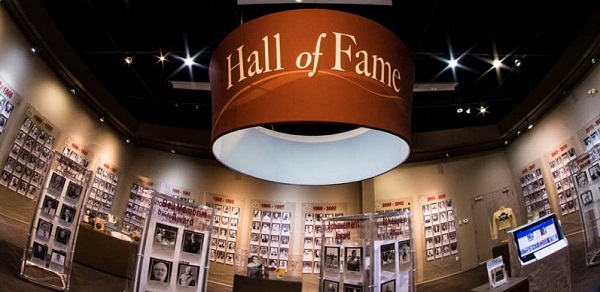
 Alberta1 day ago
Alberta1 day agoAlberta Sports Hall of Fame Announces Class of 2026 Inductees
-

 Business1 day ago
Business1 day agoCanada’s climate agenda hit business hard but barely cut emissions
-

 Business2 days ago
Business2 days agoCarney government should privatize airports—then open airline industry to competition
-

 Business19 hours ago
Business19 hours agoCarney’s Toronto cabinet meetings cost $530,000
-
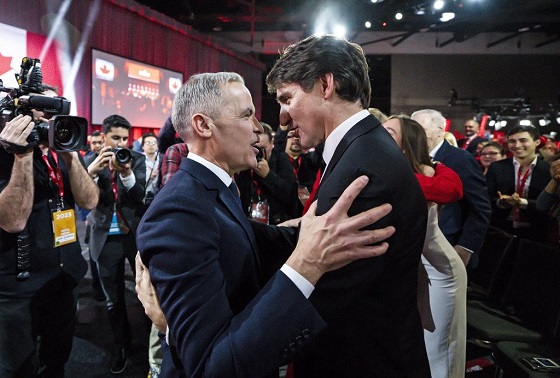
 Business2 days ago
Business2 days agoIs Carney Falling Into The Same Fiscal Traps As Trudeau?
-
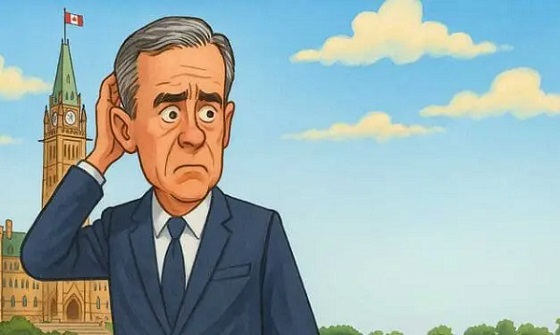
 Alberta2 days ago
Alberta2 days agoCarney’s pipeline deal hits a wall in B.C.
-

 Health1 day ago
Health1 day ago23,000+ Canadians died waiting for health care in one year as Liberals pushed euthanasia




